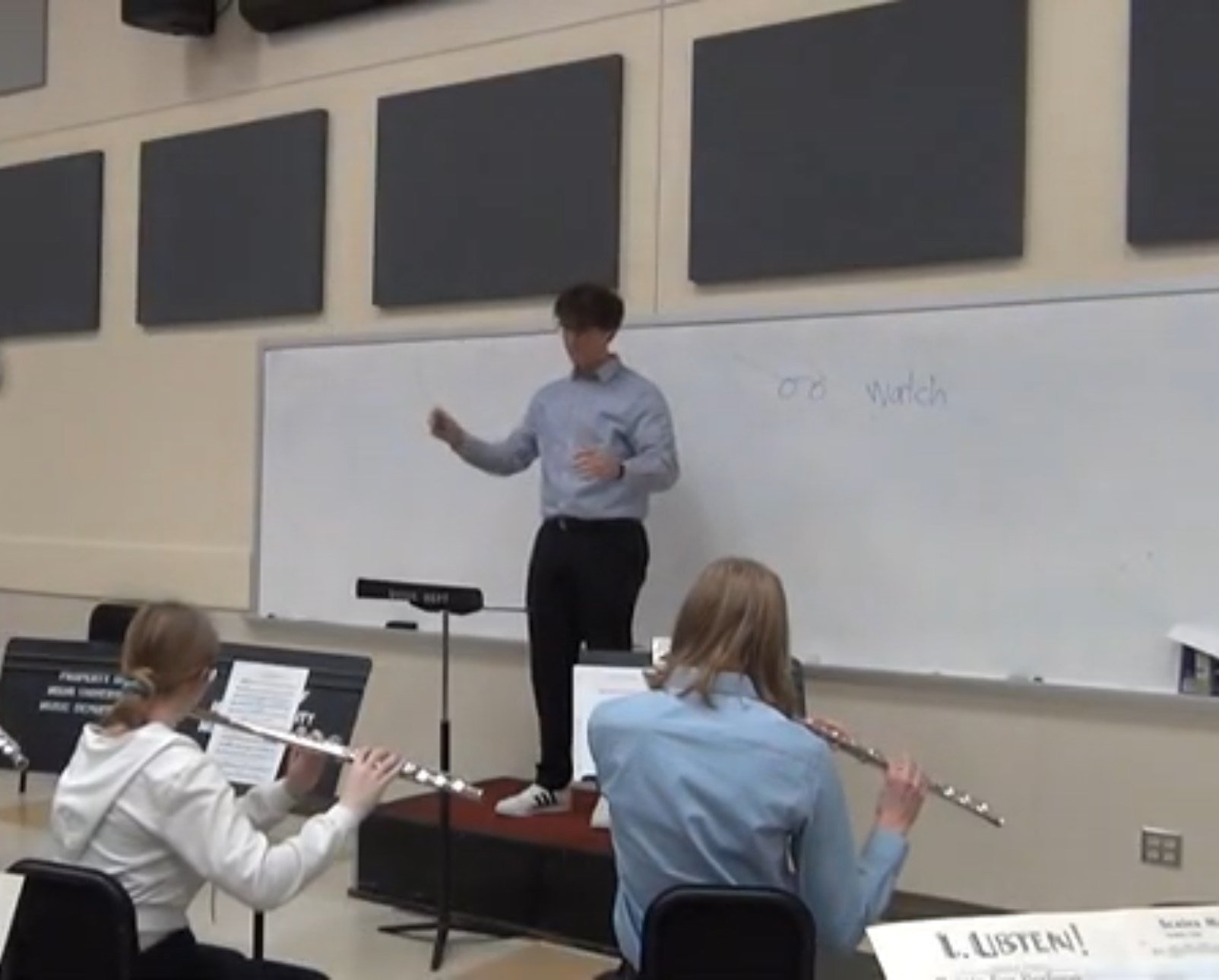Conductor
At Miami University, I've had the privilege of conducting diverse ensembles. I've found that the most effective growth comes from a collaborative, conversational approach to rehearsal. By combining clear goals, thoughtful rehearsal strategies, and thorough score study, I aim to create an environment where the ensemble can grow and develop together.
Pedagogy
Repertoire serves a fundamental role in the learning process. By finding a music selection that serves a significant rehearsal purpose as well as an achievable goal, students can develop both technical skills and a deeper understanding of the abstract concepts within music.
Engagement
Music should create a lasting connection with both the ensemble and audience, going beyond mere repetition. I aim to engage the ensemble in every rehearsal, inviting their input in interpretation and creativity. This approach shows students that music is not only a tool for growth but also a source of joy and inspiration.
Exposure
Music can be experienced in many ways, shaped by the context of rehearsal and performance. As an educator, it’s my role to introduce students to these diverse opportunities and help them thrive in each. Understanding music also involves exploring its historical context or a composer’s unique experiences, enriching the interpretation of a work.
Execution
Gustav Holst’s First Suite in E-flat flex arrangement
During conducting class, I had the opportunity along with my colleagues to be on the podium in front of peers to be put into a more authentic rehearsal space. This ‘lab band’ experience consisted of flex arrangements of famous compositions for wind band.
Hugh M. Stuart’s 3 Ayres from Gloucester flex arrangement
Gustav Holst’s Song of the Blacksmith from the Second Suite in F flex arrangement
